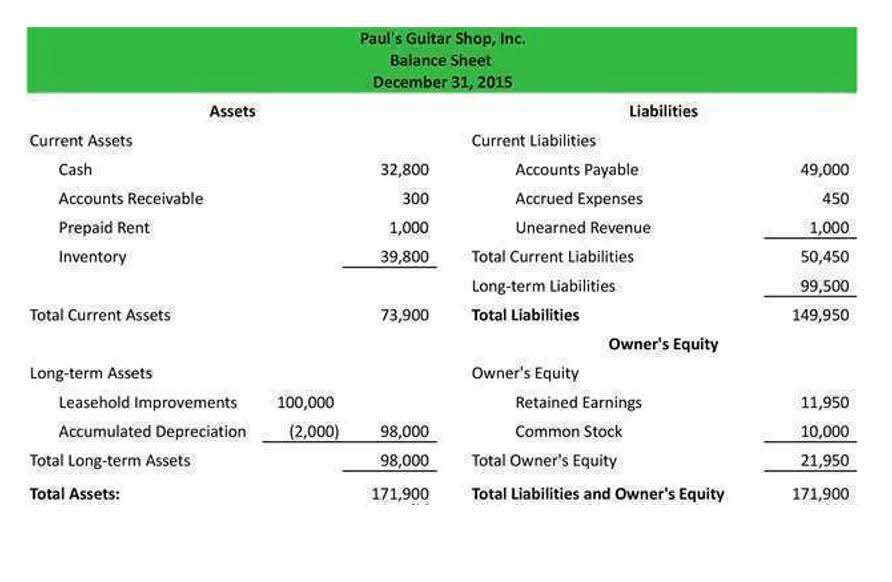
It helps in calculating key financial ratios and understanding the company’s ownership distribution. While outstanding shares determine a stock’s liquidity, the share float—shares available for public trading – plays a crucial role. A company with 100 million outstanding shares, but with 95 million held by insiders and institutions, will have a constrained float of only five million shares, impacting its liquidity. And so our company has a basic share count of 100 million — but a diluted share count of 205 million (100 million basic + 5 million options and warrants + 100 million in shares from the $500 million in convertible debt).

How confident are you in your long term financial plan?
- The shares available to investors on the open market are commonly called the float.
- A company’s outstanding shares, the total shares held by shareholders excluding treasury stock, can fluctuate due to various factors.
- For blue chip stocks, multiple stock splits over decades contribute to market capitalization growth and investor portfolio expansion.
- But there are several other parameters that investors should analyse before investing in a company.
- Of course, merely increasing the number of outstanding shares is no guarantee of success; the company has to deliver consistent earnings growth as well.
The cost basis refers to the original purchase price of an asset or investment for tax purposes. Investors calculate the cost basis to determine if their investment has been profitable or not, along with any possible taxes they might owe on the investment. Treasury stock consists of shares that the company has acquired in a buyback. These shares are held in the corporation’s “treasury” rather than in circulation and are therefore excluded from the number of outstanding shares.
Submit to get your retirement-readiness report.

Several factors can cause a company’s number of outstanding shares to rise or fall, with one of the most common being stock splits. The formula for calculating the shares outstanding consists of subtracting the shares repurchased from the total shares issued to date. As a stock market beginner, it is important for you to understand key terms related to the share market. Outstanding shares is the total number of shares available in the secondary market.
Great! The Financial Professional Will Get Back To You Soon.

This “issued” stock can be less than the total authorized, but it can never be more. There are a few reasons a company’s total common shares outstanding could change. Other companies may explicitly list their outstanding shares as a line item in the equity section of their balance sheet. The shares companies issue are known as authorized common shares outstanding formula shares, which are the maximum number of shares they are lawfully permitted to make available to investors. In the US, public companies are obligated to report their number of shares outstanding as part of the SEC’s filing requirements. But there are several other parameters that investors should analyse before investing in a company.

If you’re interested in learning about common stock, you may also in learning about the best broker available for your needs, so visit our broker center to discover the possibilities. Generally speaking, stocks with smaller floats will experience more volatility than those with larger floats. These statements are available on companies’ investor relations pages or the SEC website. The information is also available on stock data websites like Stock Analysis.
Along with individual shareholders, this includes restricted shares that are held by a company’s officers and institutional investors. For a blue chip stock, the increased number of shares outstanding due to share splits over a period of decades accounts for the steady increase in its market capitalization and concomitant growth in investor portfolios. Of course, merely increasing the number of outstanding shares is no guarantee of success; the company has to deliver consistent earnings growth as well. A company’s outstanding shares decrease when there is a reverse stock split. A company generally embarks on a reverse split or share consolidation to bring its share price into the minimum range necessary to satisfy exchange listing requirements.
A company’s number of shares outstanding refers to the total amount of shares it has issued. Not only does this include the shares available to be bought and sold by the public, but also included in this number are the restricted shares held by institutional investors and company insiders. A stock split occurs when a company increases its shares outstanding without changing its market cap or value. When a company calculates its earnings over a certain period of time, it divides its profits by the number of outstanding shares.
- Let’s say FoodZilla Ltd got approval from its board to issue 15,000 shares in the secondary market.
- Suppose that Sample Company had 100,000 shares of common stock outstanding on 1 January 2021, that 20,000 shares were issued for cash on April 1, 2021, and that 12,000 shares were retired on 1 September 2021.
- The number of outstanding shares is calculated by subtracting treasury stock from the shares issued.
- The Motley Fool reaches millions of people every month through our premium investing solutions, free guidance and market analysis on Fool.com, top-rated podcasts, and non-profit The Motley Fool Foundation.
- The formula for calculating the shares outstanding consists of subtracting the shares repurchased from the total shares issued to date.
- Issued shares refer to those shares issued by the company over time — yet, unlike outstanding shares, the number of issued shares includes shares repurchased by the company and held as treasury stock.
- Our work has been directly cited by organizations including Entrepreneur, Business Insider, Investopedia, Forbes, CNBC, and many others.
- The number is used to calculate many common financial metrics, such as earnings per share (EPS) and market capitalization.
- Further, the number of shares used in computing the average is to be weighted by the fraction of the year that the shares were actually outstanding.
- The reason for that is that most public companies have instruments that provide for shares to be issued in the future.
- While shares outstanding account for company stock that includes restricted shares and blocks of institutional shares, floating stock specifically refers to shares that are available for trading.
- Corporations raise money through an initial public offering (IPO) by exchanging equity stakes in the company for financing.
Let’s say that Helpful Fool Company has repurchased 500 shares in this year’s buyback program. The company now has 5,000 authorized shares, 2,000 issued, 500 in treasury stock, and 1,500 outstanding. The outstanding stock is equal to the issued stock minus the treasury stock. When you buy stock in a company, you buy a percentage ownership of that business. How much of the business your one share buys depends on the total common stock outstanding, a figure you can easily determine using the company’s balance sheet. Moreover, the number of shares outstanding is extremely useful when monitoring how a company conducts its business, as things like stock splits also affect share numbers.
How to Calculate the Weighted Average of Outstanding Shares
With this weighted average, we can now calculate a different and more accurate EPS of $0.80 per share. A weighted average is a way of taking the average of several numbers when a different “weight” is assigned to each one. A common example of a weighted average is calculating a grade point average for courses with different numbers of credit hours. 11 Financial is a registered investment adviser located in Lufkin, Texas. 11 Financial may only transact business in those states in which it is registered, or qualifies for an exemption or exclusion from registration requirements. 11 Financial’s website is limited to the dissemination of general information pertaining to its advisory services, together with access to additional investment-related information, publications, and links.
